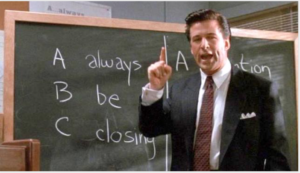 So many of the business owners and execs we talk to are struggling with how to increase customer acquisition. Usually, it’s why they’re talking to us; they’re trying to figure out how to build or add to their marketing and sales efforts. What’s essential? What’s fluff? What’s the best way to go about all of this in a digital world, and what’s the right budget for each?
So many of the business owners and execs we talk to are struggling with how to increase customer acquisition. Usually, it’s why they’re talking to us; they’re trying to figure out how to build or add to their marketing and sales efforts. What’s essential? What’s fluff? What’s the best way to go about all of this in a digital world, and what’s the right budget for each?
Let’s assume, for argument’s sake, that you’re one of those people. You’re laser-focused on growing your business and sorting out the right budget allocation for marketing and sales. Resources are limited (aren’t they always) and only the most strategic investment of time and money will do. How can you increase your customer base with the least amount of waste and the greatest chance of success?
Here’s the secret: stop thinking about marketing and sales as two separate fiefdoms.
The minimal viable approach to business development today means updating your mindset. Chuck the old-school model of interruption marketing that shouts aimlessly into the void, and lose those Willy Loman-style sales techniques that are all CRAP (Clueless, Random, Annoying, and Pushy). Today, your sales and marketing efforts should be a streamlined collaboration around a united methodology.
Sales and marketing are now (sorta) the same thing
Once upon a time, back in the analog days before anyone had heard of Google and dinosaurs still roamed Palo Alto, the customer acquisition process was simple. Marketing was marketing, and sales was sales. Rarely the twain met anywhere beyond the employee kitchen while pouring a cup of Maxwell House.
In those not-so-olden times, everyone stayed in their lane. Marketing created all kinds of artsy stuff like brochures, banners, promotions, and business cards. Sales bros drank cheap merlot at trade shows, cold-called people from purchased lists, and did pitches in fancy conference rooms that had bowls of lifesaver mints on the table. The company crossed its fingers and hoped that all of this disconnected activity produced customers.


(From “Planes, Trains and Automobiles:” marketer Steve Martin’s job is all about ads. And he’s late for his plane.)
For a while, this silo approach worked fine. Nobody knew any better so it was the only game in town. Before the interwebs, independent analysis was hard and buyers relied on salespeople for all of their information. Sellers had all of the power.
Fast forward to the aughts, and the tectonic plates of sales and marketing started shifting. Technology put power in the hands of the buyers. Digital content like blogs, ebooks, and videos began flourishing, and it became easy for buyers to do their own research, understand their needs, identify options, and take control of the sales process.
In other words, buyers now had the ability to create their own customer journey. They began rejecting the old school ways of “legacy sales,” where salespeople foisted one-size-fits-all solutions on them without knowing much about their unique situation. Buyers stopped wanting to be “sold to” at all. Now they gravitated to a sales process that felt more like educating and advising.
And that brings us to today. Savvy business owners and executives are building marketing and sales departments that work hand-in-hand, with a focus on generating leads, reducing friction, boosting efficiencies, and increasing customers. Forget about throwing hooks in the water and hoping a fish happens to bite. Sayonara to scooping up as many leads as possible and assuming something will fit, like a discount-crazed Black Friday shopper piling their cart with junk and racing to the checkout counter. Smart sales is about attracting targeted leads and moving them through a series of qualifying stages before they become customers.
There’s a name for this approach: inbound sales.
Inbound sales is the natural extension of inbound marketing, a methodology and term developed by HubSpot in 2005, although it didn’t really start to take off until 2012.
Inbound marketing helps before it asks anything in return of prospects, providing value to prospects before presuming any value from them. Much of this is done through compelling content that addresses the problems of buyers and makes prospects smarter without any hidden agenda. Inbound marketing creates awareness and attracts leads for a company by putting the needs of its audience first and its own needs second.
From “Always Be Closing” to “Always Be Helping”
But then what?
Back in the early inbound days, inbound marketing was doing all of this brilliant audience-first lead generation…and then handing the baton to sales teams with legacy mindsets focused exclusively on outbound sales. That meant canned pitches. Rushing to generic presentation mode before further lead qualification. An “always be closing” mentality that positioned sellers as predators and buyers as prey.

This simply wouldn’t do. For the inbound methodology to work, sales and marketing needed to dance in sync.
Read more: Marketing is Dead. Long Live Inbound Marketing.
Inbound sales was borne from the need for sales teams to capitalize on the success of inbound marketing. As inbound marketing generates and qualifies leads, sales must double down on this qualification process to ensure that buyers are the right fit for them and that they’re the right fit for buyers. Sales determines this by identifying the individual needs of buyers and guiding them through the decision-making process, a collaborative exploration fueled by genuine curiosity. Inbound sales shifts the “Always Be Closing” mantra to “Always Be Helping.”
Who is the right customer for you, and for whom are you the right vendor? Don’t assume you know this answer the minute a lead shows the faintest interest. Is this really a match on both sides?
Think Sherlock Holmes. Does he jam, bend, and ignore the clues just so they fit the suspect in mind, the one who’s obviously guilty because he chain-smokes Camels? Course not (besides the version with Will Ferrell). Holmes follows the clues to where they naturally lead, even if that’s the teetotaling angelic gardener who seemed so innocent.

Inbound sales solicits buyers to offer more information about themselves so that sellers don’t need to make any assumptions. We examine digital behaviors: what forms they’ve downloaded, what pages they’ve visited, what content they’ve read, what social posts they’re responding to and posting themselves. From this activity alone, even before the first conversation, we can begin to understand the buyer’s journey and start crafting an approach tailored to their needs.
The point isn’t to waste your time talking to as many people as possible, like a blowhard at a cocktail party chatting up bored strangers who are plotting an escape route to the buffet.
Inbound marketing establishes specific buyer personas, develops content and activity that will attract these personas, draws in qualified buyers who are actually interested in what you’re selling, and helps these buyers understand your value.
Inbound sales is aligned with your buyer personas and continues this qualification process. That means learning more about targeted buyers through research and direct interaction, guiding buyers to explore their needs and how you might help, and building a relationship of trust that sets the stage for a satisfied customer.
You need a CRM strategy
The tool that unites your inbound marketing and sales is a CRM database. There’s simply no way to run a real sales and marketing process today without a CRM strategy that captures insights, analyzes data, and facilitates collaboration.
Your CRM should organize contact data, manage all communication and interactions with prospects, automate data entry, remind you to follow up with prospects, organize contact data, segment customers, create sales reports, automate forecasting, scale your sales processes, ensure team communication, and make admin tasks efficient. Above all, your CRM should align every activity between your marketing and sales teams, ensuring that they’re singing from the same song sheet and creating harmonious messaging to prospects.
A strong CRM will serve as the control tower for your inbound marketing and sales efforts, allowing you to align your seller’s journey with the buyer’s journey of your prospects. As buyers move through the different stages – from awareness of their problem, to consideration of their options, to a decision about their solution – you should be moving in tandem, from identifying potential buyers, to connecting with these prospects, to exploring whether there’s a fit, to advising them of their options.
Read more: This 1,000-Year-Old Hot Trend is Key to Business Development Today
As you think through your investment in marketing and sales, just remember that the very best bang for your buck – and the most effective and efficient approach today – is a streamlined effort around inbound. Stop throwing spaghetti at the wall; all that does is make a mess. Organize a proper meal around customer acquisition, one that is planned, orderly, and expertly prepared for each diner’s taste; it’s a more fruitful experience for everyone involved.
![]()
This blog was written with the input of Rob Bynder, the founder of Bynder Group, a HubSpot-certified firm for web design and marketing. Shanna and Rob know each other from the first dot.com boom days, back when they worked together at a big L.A. web agency that threw awesome parties. They now happily collaborate on many client engagements.